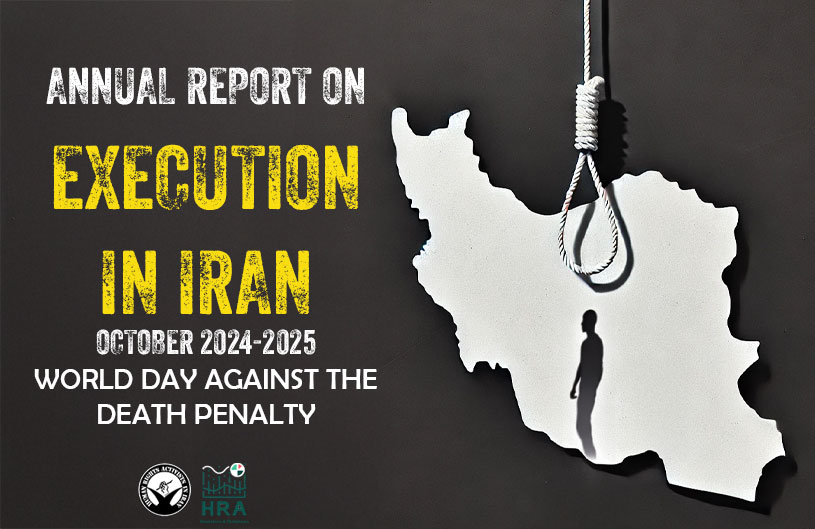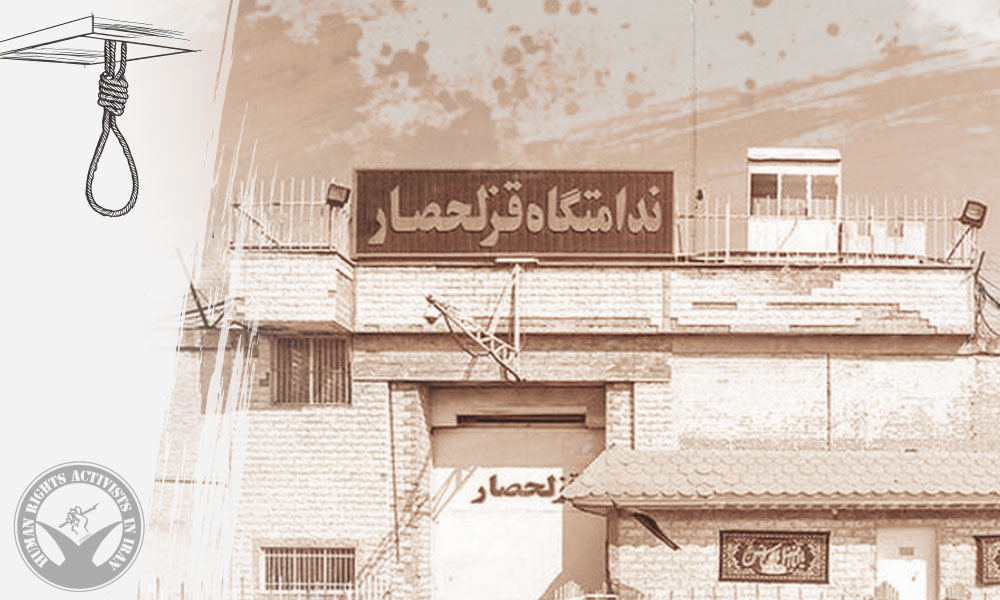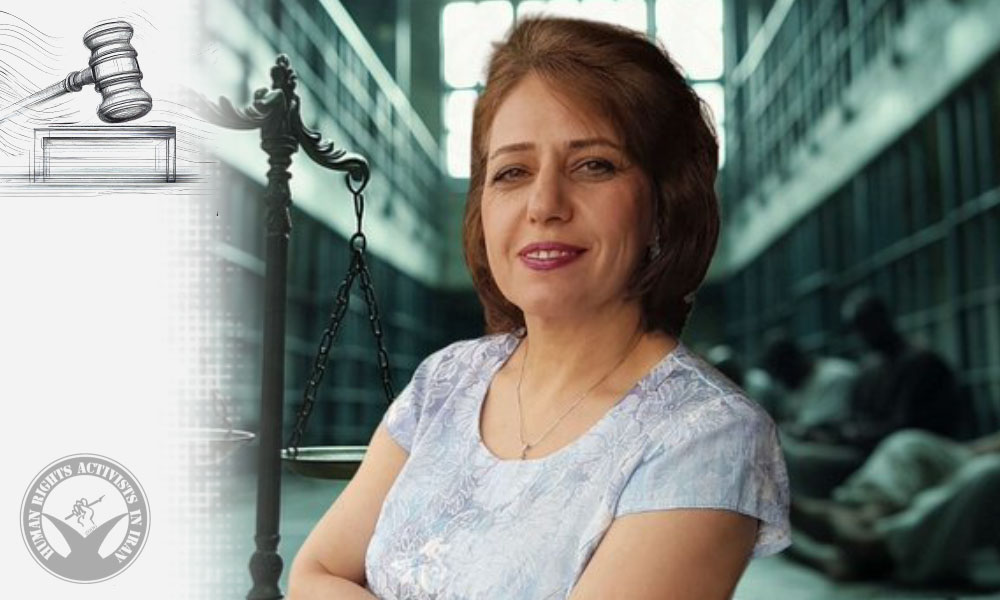HRANA- On the World Day against the Death Penalty, the Center of Statistics of Human Rights Activists in Iran (HRA) has published its annual report in an effort to inform the public about situation of the death penalty in Iran, particularly thousands of individuals facing the death penalty and awaiting looming executions.
HRA’s Statistics Center relies on the work of HRANA reporters, as well as a network of independent and verifiable sources. It also incorporates the judicial authorities’ announcements or confirmations of prisoner executions on media, and as such, is exposed to a margin of error representing efforts by the Iranian authorities to omit, conceal, or restrict the collection of such data.
Between October 10, 2024, and October 8, 2025, at least 1537 individuals were executed by hanging in Iran, rising to 86.07% compared to the same period last year. Of these executions, 8 were carried out in public. The defendants were deprived of the right to a fair trial.
HRANA obtained 1314 reports regarding executions and death penalty in Iran during this period. The identified executed individuals, include 49 women and 3 juvenile offenders under the age of 18 at the time of alleged crime. Compared to the last period, the execution of female offenders has increased 113%.
According to the reports obtained by HRANA, over this period, Iranian authorities sentenced at least 191 defendants to death penalty, including at least 14 women, and 4 individuals to public execution. Death sentences issued increased by 2.6% compared to the last year. In the reporting period, the Supreme Court additionally upheld 54 previously imposed death sentences.
As illustrated in the chart below, based on the number of individuals executed, the highest number of reports were published in September 2025, while the most significant drop in the number of reports occurred in October 2025. since only one-third of the month has passed, these statistics may change by the end of the current month.
 As illustrated in the chart below, based on the number of collected reports, the highest number of reports on violations in this area were published in September 2025, while the most significant drop in the number of reports was observed in October 2025. since only one-third of the month has passed, these statistics may change by the end of the current month.
As illustrated in the chart below, based on the number of collected reports, the highest number of reports on violations in this area were published in September 2025, while the most significant drop in the number of reports was observed in October 2025. since only one-third of the month has passed, these statistics may change by the end of the current month.
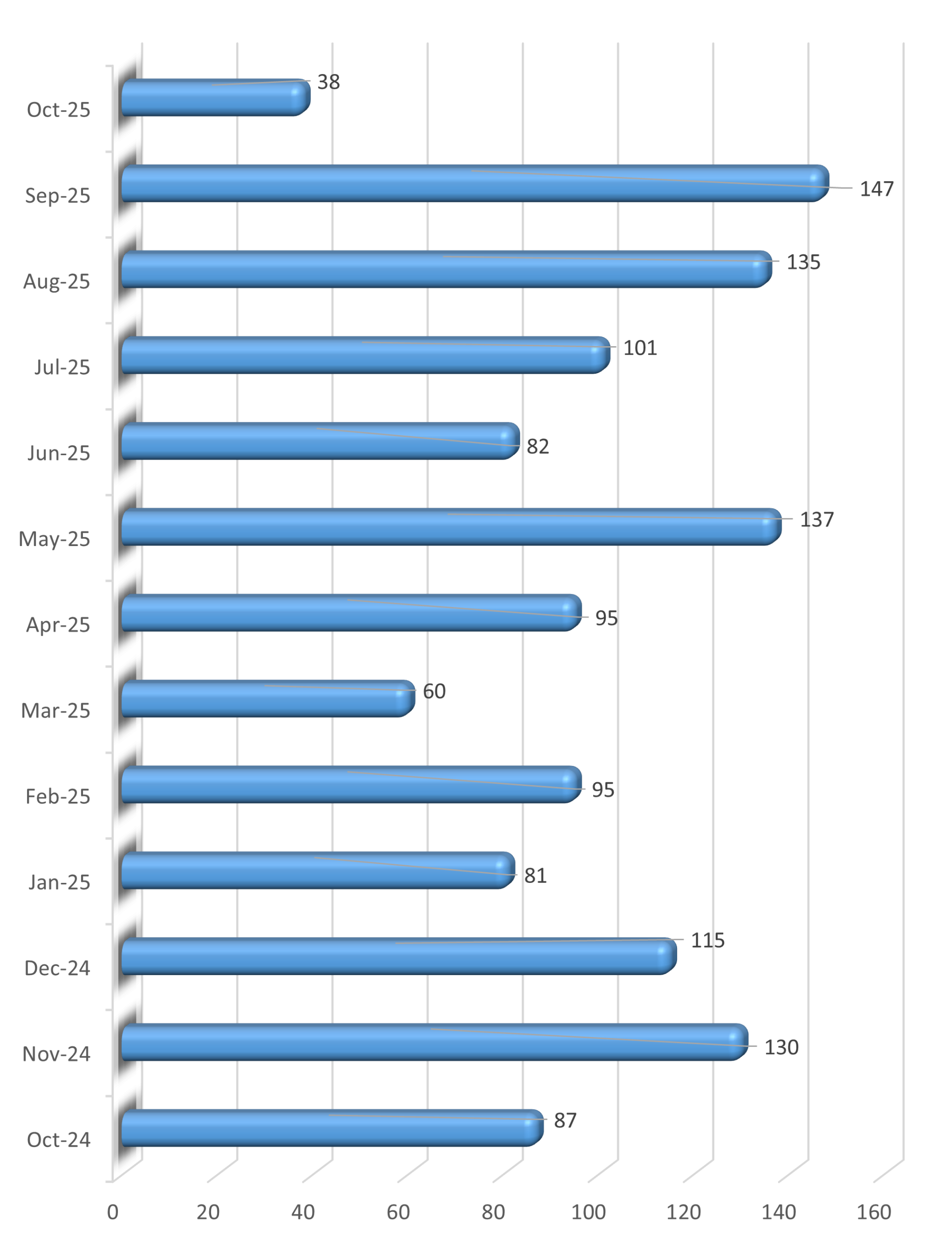 Based on the collected information, 48.34% of the executed individuals were sentenced on drug-related charges, and 43.46% on murder charges in Iran. Additionally, 2.15% were executed on charges of rape, 1.89% on unknown charges, 1.69% on Moharebeh or Baghi (political-security related) charges, 0.85% on non-political Moharebeh charges, 0.85% on security-related charges (espionage, terrorism, or bombing), 0.52% on corruption on earth, 0.2% on armed robbery, and 0.07% on ideological, political, or religious charges.
Based on the collected information, 48.34% of the executed individuals were sentenced on drug-related charges, and 43.46% on murder charges in Iran. Additionally, 2.15% were executed on charges of rape, 1.89% on unknown charges, 1.69% on Moharebeh or Baghi (political-security related) charges, 0.85% on non-political Moharebeh charges, 0.85% on security-related charges (espionage, terrorism, or bombing), 0.52% on corruption on earth, 0.2% on armed robbery, and 0.07% on ideological, political, or religious charges.
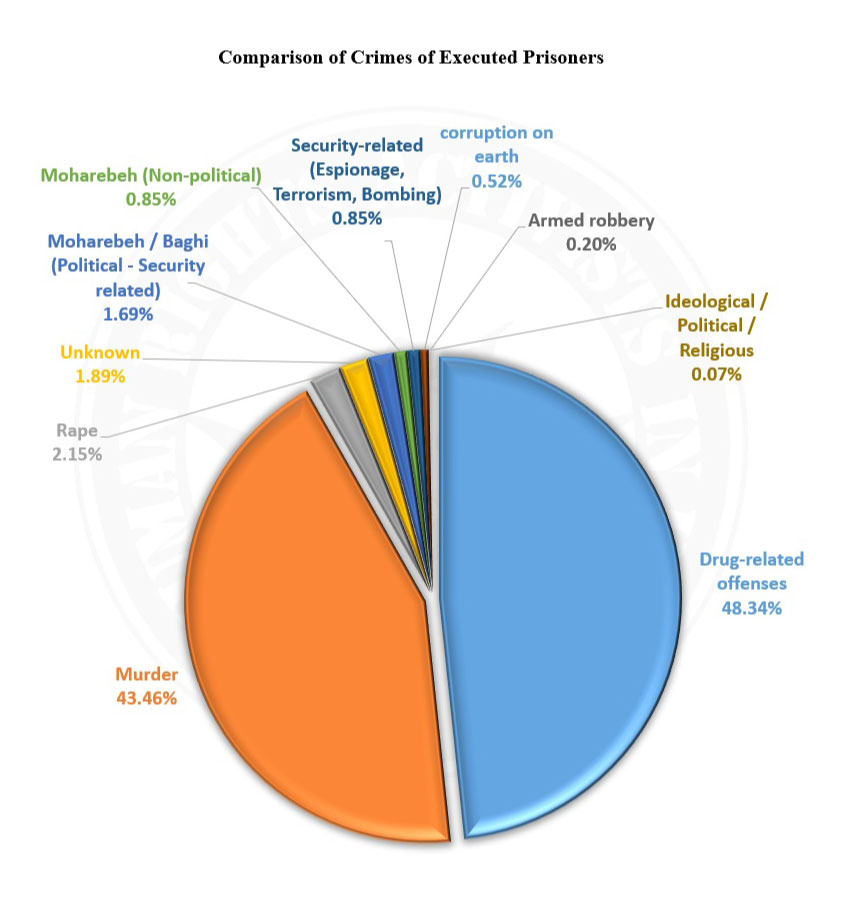
The pie chart below displays execution numbers by the province in which they took place. According to this chart, the Alborz (where three overcrowded prisons are located) had the highest number of executions at 14.57%. Isfahan and Fars Provinces come second and third, with 8.39% and 7.87%, respectively.
The table below shows the execution rate per 100,000 people in the provinces of Iran, based on the number of executions and the population of each province. This table provides a comparison of the implementation of death sentences across different provinces and identifies those with the highest execution rates relative to their population, which can serve as an indicator of the intensity of judicial enforcement in various regions of the country.
Execution Rate per Capita in Iran’s Provinces Based on the Number of Executions and Population
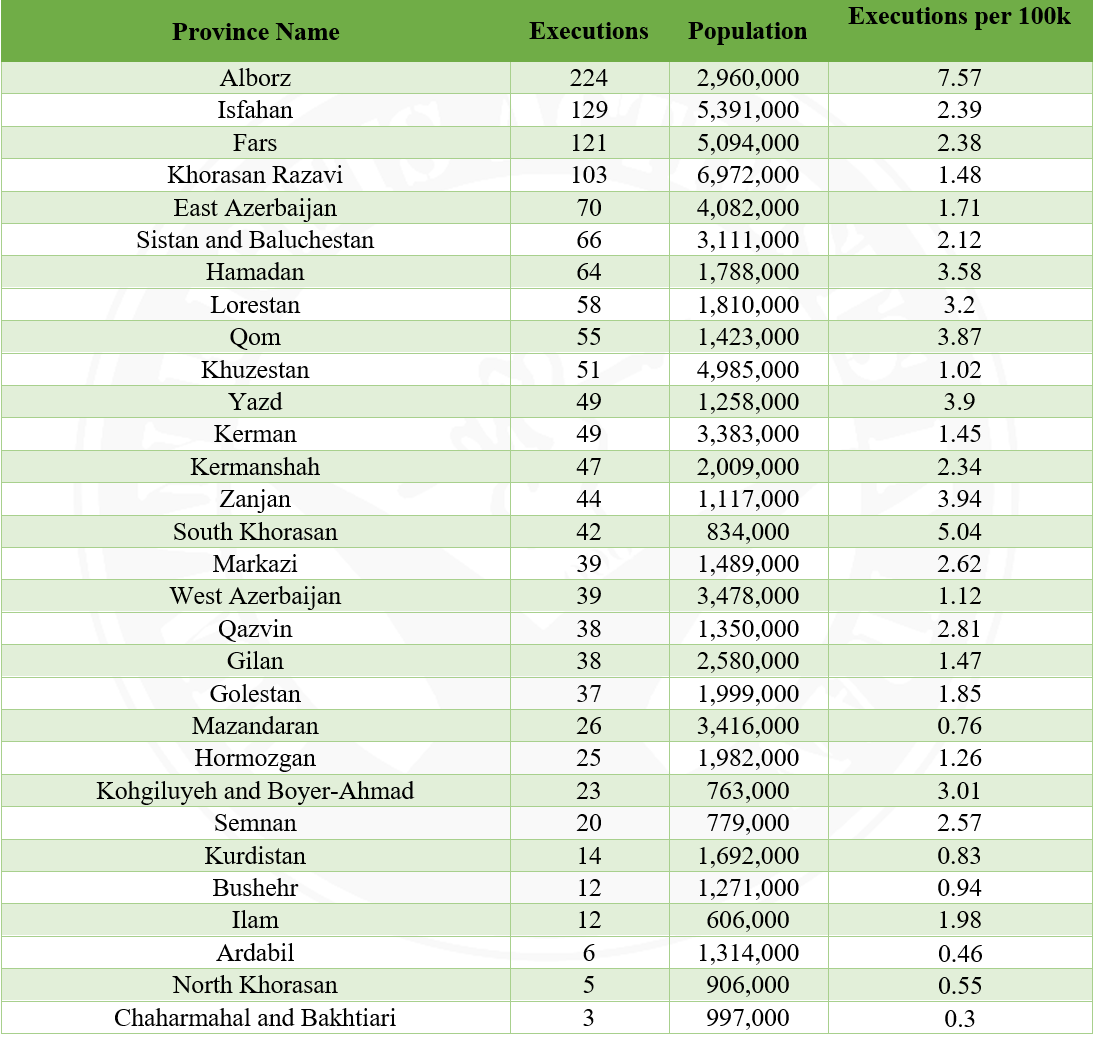
The chart below depicts the distribution of executions’ information sources. The chart indicates that 94.14% of HRANA-confirmed executions were not announced by the official Iranian sources. Undisclosed executions are referred to as “secret” executions.
The chart down shows the execution numbers by gender.
The chart below displays execution numbers by the prison where the executions were carried out. The Qezel Hesar Prison of Karaj And Dastgerd Prison of Esfahan officials have carried out the highest number.
The chart below displays percentage of executions carried out in public vs the number of executions that were carried out in prison. According to statistics, 0.52% of the executions in Iran were carried out in public.
Ten-Year Trend of Executions in Iran (2014–2025)
Although there have been periods of relative decline in the number of executions within the reporting period, the overall trend indicates a continuous increase and a return to high levels of capital punishment enforcement.
According to data from the Statistics Department of Human Rights Activists (HRA), after a noticeable decline between 2015 and 2019, the number of executions began to rise again starting in 2021. This increase peaked in the period of 2024–2025, with at least 1,537 executions recorded, the highest number documented in the past decade.
Compared to the previous year (823 cases), the number of executions has increased by more than 86%, also showing a significant rise compared to the ten-year annual average. These figures have been recorded despite the continued lack of access to official and transparent information in this field, and a substantial portion of executions have been carried out secretly or without public disclosure.
According to data from the Statistics Department of Human Rights Activists in Iran (HRA), over the past ten-year period, drug-related charges and intentional murder have accounted for the highest share of executions carried out in the country. This is despite the fact that, based on the 2017 amendment to the Anti-Narcotics Law, projections had anticipated a decrease in executions in this category.
During this period, a significant portion of executions were related to drug offenses, followed by intentional murder as the second most common charge. Other charges, including rape, armed robbery, moharebeh, corruption on earth, security and political offenses, as well as crimes related to sexual conduct or alcohol—have comprised a smaller share of the total executions.
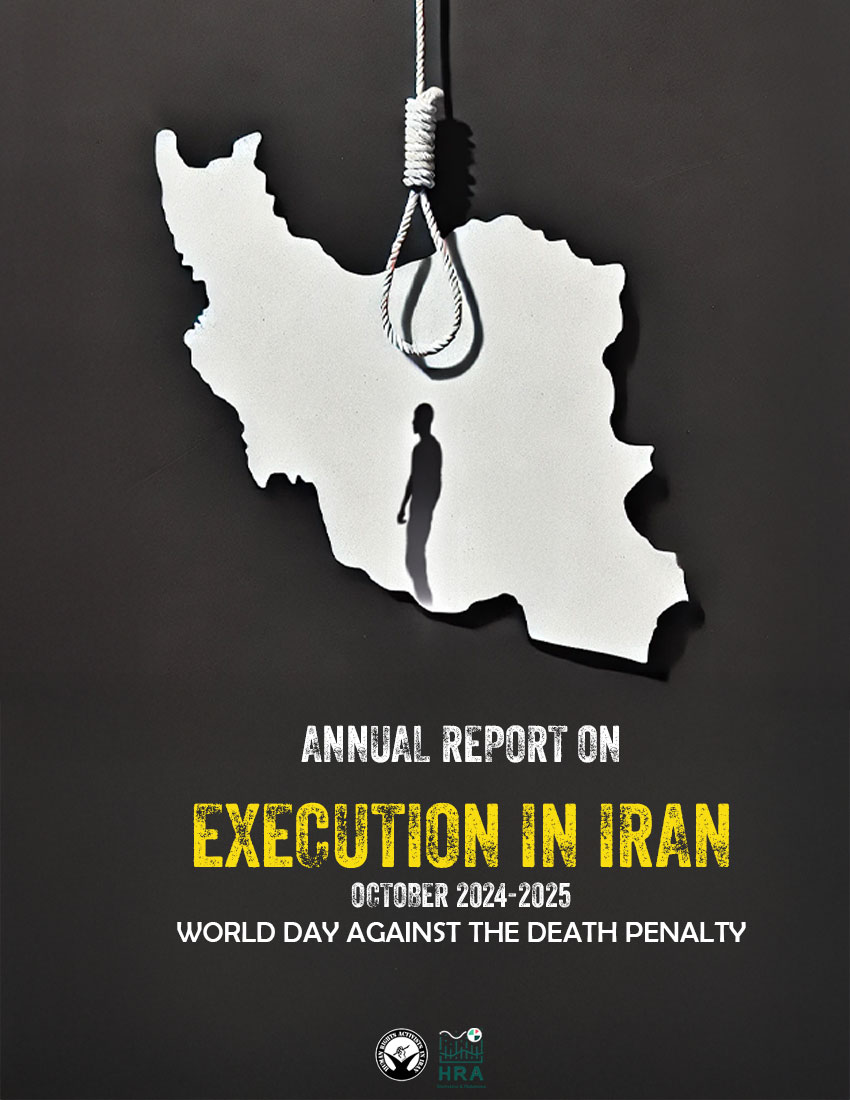
On the occasion of the World Day Against the Death Penalty, Human Rights Activists in Iran issued a statement calling for urgent and coordinated action by the international community to halt the ten-year wave of executions, reform domestic laws, hold perpetrators of extrajudicial executions accountable, and take unified international measures to confront the growing wave of executions in Iran. Click here to read the full text of the statement.



